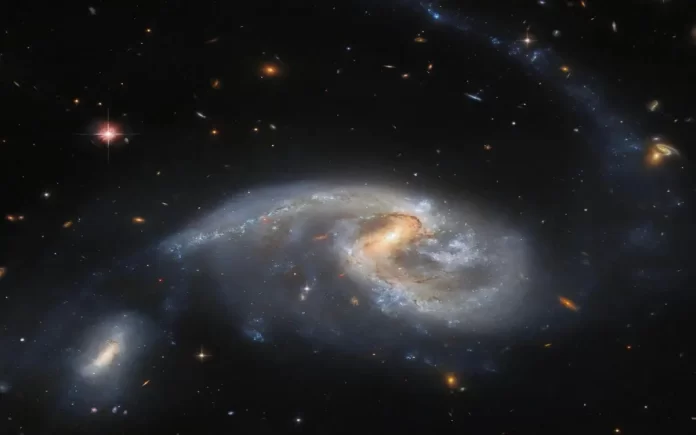New York: Once again, NASA has captivated audiences worldwide with a breathtaking glimpse into the depths of outer space. The latest viral sensation making rounds on social media is a stunning image captured by NASA’s Hubble Telescope, showcasing two galaxies engaged in what scientists describe as a “cosmic interaction”.
Shared by NASA across various platforms, the image showcases the intricate dance of celestial bodies situated approximately 160 million light-years away from Earth. In their post, NASA provides a captivating insight, revealing that the cores of these galaxies are separated by a distance of about 67,000 light-years, with the closest point between them measuring approximately 40,000 light-years. Despite the vastness of these distances, in the cosmic scale, they are considered close, resulting in a visually striking phenomenon known as a “tidal-tail” extending from the galaxy to the right, potentially distorting its spiral shape.
Also Read: Fermi Paradox | Elon Musk’s Musings on Extraterrestrial Existence and Humanity’s Cosmic Future
Describing the mesmerizing scene depicted in the image, NASA elaborates on the elements captured within. A prominent spiral galaxy dominates the foreground, adorned with vibrant hues of interstellar dust, while a smaller neighboring galaxy sits in close proximity at the end of a spiral arm. Adding to the cosmic spectacle, a long, faint tail of stars gracefully extends from the right side of the spiral galaxy, reaching toward the top of the image. Furthermore, keen observers may notice several distant galaxies dotting the background, accompanied by the presence of a solitary bright star in the foreground, adding depth and dimension to the composition.
This remarkable snapshot serves as a testament to the awe-inspiring beauty and complexity of the universe, inviting viewers to marvel at the intricacies of cosmic interactions unfolding millions of light-years away from our own celestial vantage point.



